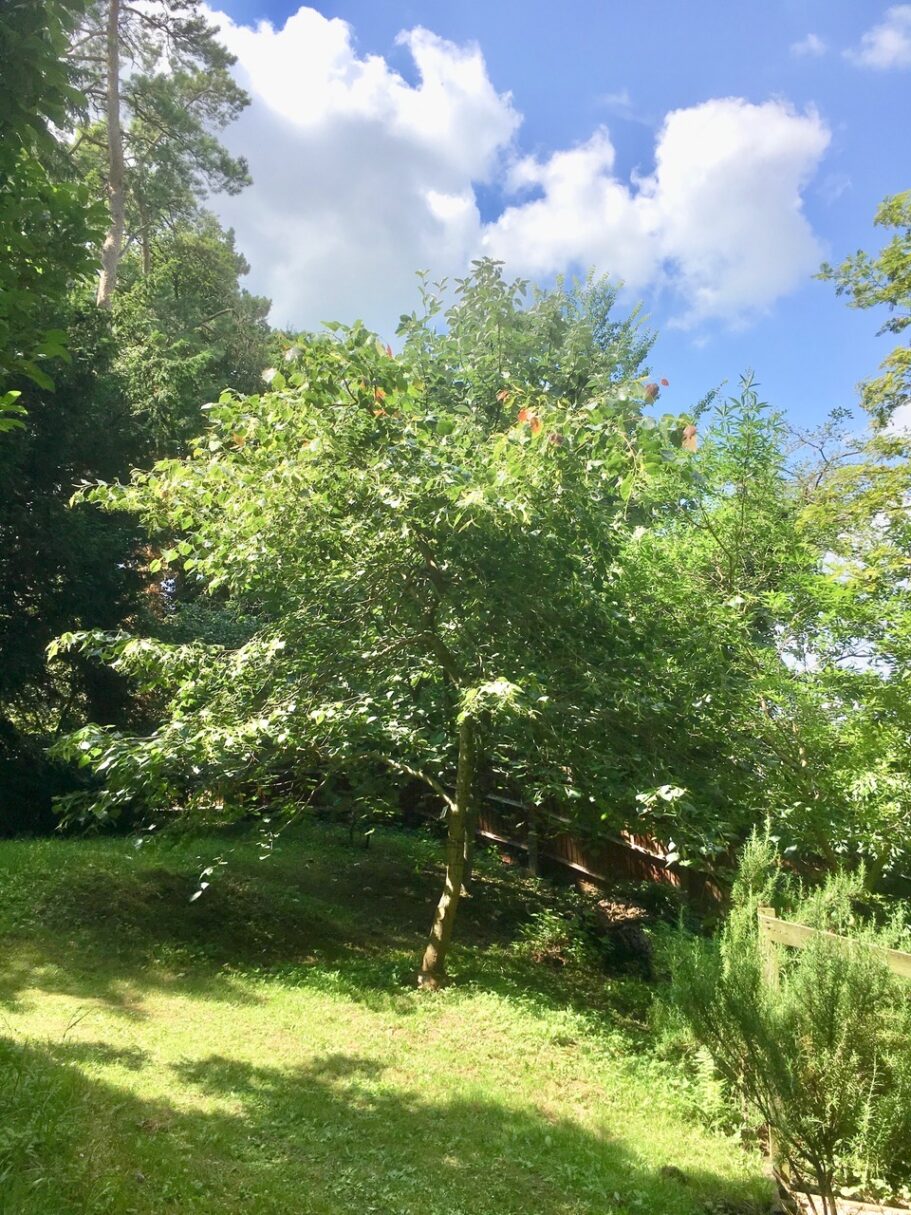#411 (M11) HENRY’S LIME
Tilia henryana

Planted: 2007
View On MapThis tree can be found at the west end of the Grass Path, at the head of the steps.
| Distribution: | Very rare native of central China |
| Planting Date: | March 2007 supplied by Pan-Global Plants, Frampton-on-Severn, Gloucestershire. |
| Growth Habit: | Medium sized tree to 25 m in the wild. Young twigs and branches downy. |
| Bark: | Grey to mid-brown developing narrow vertical furrows and ridges. |
| Leaf: | Broadly ovate, up to 13 cm long, oblique at the base, or heart shaped, taper-pointed. Conspicuously toothed with tufts of down in underside vein axials. New growth pink-tinged to shocking pink, and downy on both sides. Becoming a dark green shiny surface but paler and matt below. |
| Flowers: | Late summer (up to October) 10 cm to 15 cm cymose clusters on stalk in leaf axils. Up to 10 buds in each cluster, springing from midway along an oblong pale green bract up to 10 cm long. Flower stalks up to 2.5 cm to 4 cm long . Very fragrant flowers, whitish to pale yellow, have 5 petals, with prominent pistil. |
| Fruit: | Groups of small, woody green spheres supported by the green wing-like bract that acts as a sail for seed dispersal. |
| Uses: | Lime wood is generally easy to work and used for turning, carving and furniture making. The wood does not warp and is still used to make sounding boards and piano keys. Lime bark was traditionally used to make rope. The flowers are a valuable, but addictive, source of nectar for bees. Lime-flower, or Linden flower, honey is widely used. |
| Plant Hunter: | Discovered by Augustine Henry in 1888 in western Hubei, China. Introduced by Ernest Wilson for Veitch Nurseries, Exeter, Devon, although there is no record of the seed he claims to have sent to Messrs. Veitch in 1901. |
| Introduction Date: | The plant at Royal Botanic Gardens Kew is from 1934 seed sent from Nanking. |
| Anecdotes and Comments: | According to Wilson it is uncommon in the wild and growing taller than any other Lime of Central and West China. The trees he recorded in 1907 at 1200m, were 24 m tall with a 220 cm girth. Although trees from that part of China grow well in Britain, T. henryana is an exception, growing very slowly in cultivation. |